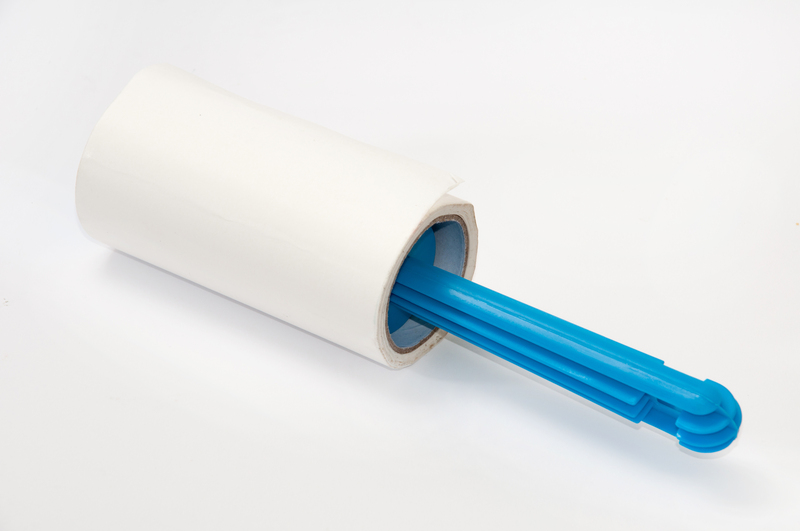Master the Art of Cleaning Stubborn Burnt-on Residue from Stovetops
Posted on 11/09/2025
Master the Art of Cleaning Stubborn Burnt-on Residue from Stovetops
Keeping your stovetop sparkling clean presents a common household challenge--especially when faced with stubborn burnt-on residue. This grime seems unmovable, but don't worry! This comprehensive guide will unveil the secrets to cleaning stubborn burnt-on residue from stovetops, using effective, kitchen-approved methods designed to restore any stovetop to its former gleaming glory.
Understanding Burnt-on Residue: Why It's So Hard to Clean
Before you start scrubbing, knowing why burnt residue sticks to your stovetop can help you select the right tactics for removal. When food or sauces boil over, the high heat causes starches, proteins, and sugars to carbonize, effectively fusing them to the stove's surface. As the mess bakes on each time you cook, the residue becomes progressively more tenacious.
- Gas stovetops: Often feature removable grates but baked-on spills can still be tough to clean.
- Electric stovetops: Burns on both coil and smooth glass surfaces require special attention.
- Induction cooktops: Glass tops are particularly prone to streaks and scratches without careful cleaning.
Regardless of which kind of stove you own, the methods outlined in this guide will help you master the art of cleaning burnt-on grime from stovetops.

Step-by-Step Guide to Removing Stubborn Burnt-on Stovetop Messes
1. Safety First: Prepare Your Workspace
Unplug electric stoves and make sure all surfaces are completely cool. Remove any loose debris or lightweight particles with a soft cloth or paper towel. If you're working with a gas stove, take off the grates and burner covers for easier access.
- Set out your supplies before you begin.
- Ensure proper ventilation, especially if you use commercial cleaners.
2. Assemble the Right Cleaning Materials
There are a variety of cleaning supplies that cut through burnt-on residue from stovetops. Here are some tried-and-true options:
- Baking soda - natural & mildly abrasive
- White vinegar - excellent for breaking down mineralized messes
- Dish soap - grease-cutting power
- Non-scratch sponges or microfiber cloths
- Razor blade scraper or plastic scraper - for glass tops (use with extreme care)
- Commercial stovetop cleaners (optional)
- Gloves - to protect your hands
3. Pre-Soak the Burnt Residue
Soaking burnt-on residue is the key to effortless cleaning. For most stovetops, a homemade mixture of baking soda and water creates a gently abrasive paste that can loosen even the most stubborn stains.
- Mix 3 tablespoons of baking soda with 1 tablespoon water to form a paste.
- Spread the paste generously over the residue and let sit for at least 20-30 minutes (or even overnight for challenging messes).
- If the residue is especially greasy, add a squirt of dish soap to the mix.
4. Try the Vinegar Solution Method
Once the paste has soaked, lightly spritz the area with white vinegar using a spray bottle. The fizzing reaction further loosens burnt debris. Wipe with a microfiber cloth, using a circular motion for maximum effectiveness.
- Repeat as needed for tough or layered stains.
- Rinse with clean water and wipe dry to prevent streaks.
5. Scraping Techniques for Glass and Ceramic Stovetops
- Apply gentle pressure with a plastic scraper at a shallow angle to lift stubborn spots.
- For truly stuck-on residue, a razor blade scraper (held at 45 degrees) can be used, but only on glass surfaces--never try this on painted, enameled, or coil stoves.
Never use steel wool or abrasive scouring pads, which can scratch and damage surfaces.
6. Clean Stovetop Grates and Burner Caps
For gas stovetop grates and burner caps, remove and soak them in a sink filled with hot, soapy water for at least 30 minutes. Use a nylon brush or non-scratch pad to scrub away loosened residue. For really persistent stains:
- Sprinkle grates with baking soda, spray with vinegar, and let fizz for 10 minutes before scrubbing.
- For cast iron grates, avoid soaking for extended periods to prevent rust. Dry thoroughly and rub with a drop of oil before replacing.
7. Commercial Cleaners: Do They Really Work?
Several store-bought stovetop cleaners are available for cleaning stubborn burnt-on residue. Choose one recommended for your stove type (ceramic, glass, enamel, etc.).
- Always follow manufacturer instructions and test on a small inconspicuous area first.
- Many cleaners are specially formulated to cut grease and lift carbonized food without scratching.
When possible, opt for eco-friendly and biodegradable formulas to reduce chemical exposure in your kitchen.
Pro Tips for Maintaining a Spotless Stovetop
Now that you've mastered the art of cleaning burnt-on grime from stovetops, establish a routine that keeps future messes at bay. Prevention is the best cleaning solution!
- Wipe up spills immediately: Address accidents as soon as the stovetop cools down.
- Use burner protectors or liners: These catch spills and can be removed and washed easily.
- Apply a stovetop polish: Many ceramic/glass stovetops benefit from a light polish to buff out micro-scratches and deter future stains.
- Dedicate 3 minutes each night: A quick evening wipe-down stops stubborn buildup before it even starts.
Common Stovetop Cleaning Mistakes to Avoid
While cleaning, avoid these common errors which can cause permanent damage to your stovetop:
- Using harsh abrasives: Steel wool, brillo pads, and gritty powders can scratch delicate surfaces.
- Over-soaking cast iron parts: Extended soaking can result in rust.
- Neglecting burner ports: Use a toothpick or needle to keep burner holes clear for optimal performance.
- Mixing cleaning chemicals: Bleach and ammonia should never be combined due to toxic fumes.
Natural Solutions for Eco-Friendly Cleaning
For those prioritizing eco-friendly cleaning, natural agents like vinegar, baking soda, and lemon juice offer power without the chemical footprint. Here's how to use them:
- Vinegar: Cuts through mineralized stains and glass streaks. Use full strength in a spray bottle for best results.
- Baking Soda: Excellent for absorbing odors and providing gentle abrasion.
- Lemon Juice: Naturally antibacterial and helps lift grease with a fresh scent.
Combine these for a powerful, multipurpose cleaner--you'll master cleaning burnt-on residue from stovetops in a way that's kind to your home and planet.
Stovetop-Specific Cleaning Recommendations
Glass and Ceramic Stovetops
- Use microfiber cloths for polishing and removing water spots.
- Only use approved scrapers designed for glass tops to avoid etching the surface.
- Avoid resting wet lids or pots, as trapped moisture can stain glass.
Gas Stovetops
- Regularly clean burner caps, ports, and grates to maintain flame quality.
- Avoid water pooling near controls to prevent shorts or corrosion.
Electric Coil Stovetops
- Remove and clean drip pans weekly to prevent stubborn food buildup.
- Never submerge coils--wipe down with damp cloth instead.

FAQs: Toughest Questions About Cleaning Stubborn Stovetop Residue
-
Q: Can I use oven cleaner on stubborn stovetop stains?
A: Oven cleaners can be too harsh for many stovetop surfaces, especially glass or painted enamel. Always check your manufacturer's instructions. -
Q: What if the residue is still stuck after several tries?
A: Persistence is key. Try soaking with a hot, wet towel over your paste mixture for extra softening, or repeat the process over multiple days for severe burns. -
Q: How do I prevent streaks on glass cooktops?
A: Buff dry with a microfiber cloth for a streak-free shine and avoid using paper towels that shed fibers. -
Q: Are there stovetops you should never use baking soda on?
A: Baking soda is generally safe, but always test in a small area first and avoid using it on aluminum or delicate painted finishes to prevent dullness.
Conclusion: Achieving a Flawless, Burnt-Free Stovetop
Cleaning stubborn burnt-on residue from stovetops is not only possible--it can be simple with the right approach! With non-abrasive tools, household ingredients like baking soda and vinegar, and a little patience, you can banish tough grime and keep your kitchen looking fabulous all year round. Make cleaning part of your regular routine, and burnt-on stains will soon be a thing of the past.
Now you know how to master the art of cleaning burnt-on residue from stovetops, embrace these techniques and enjoy a cleaner, more inviting kitchen every day!





